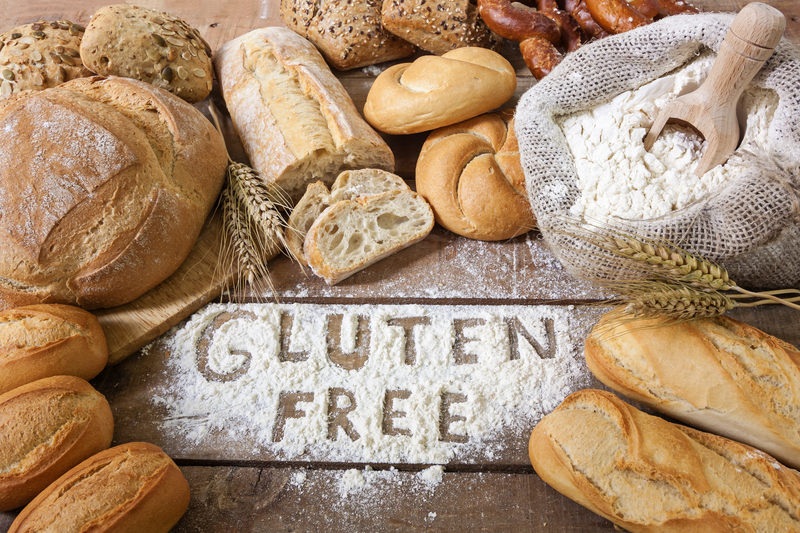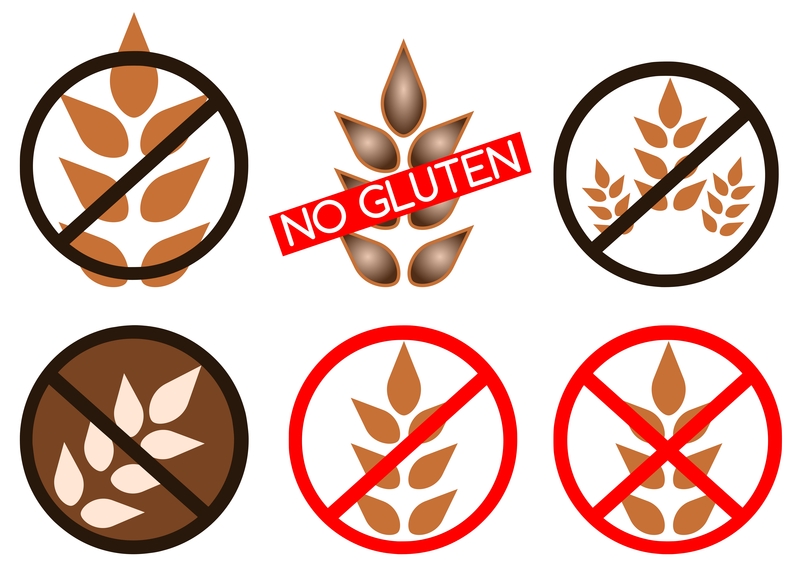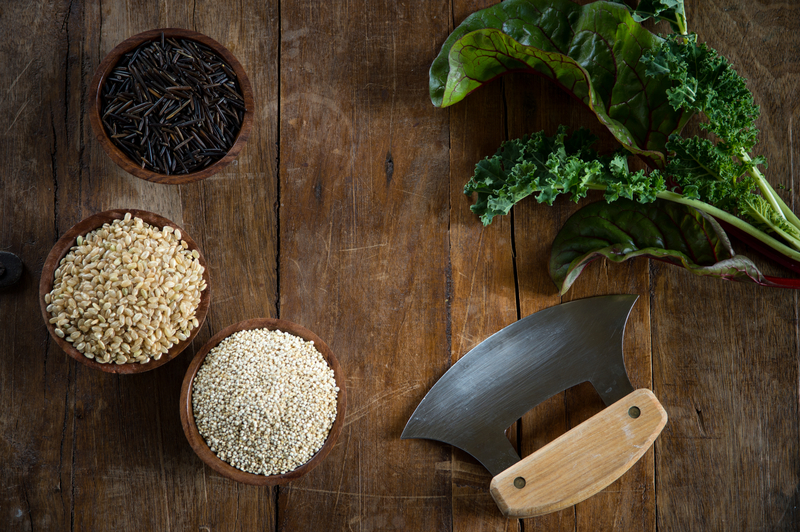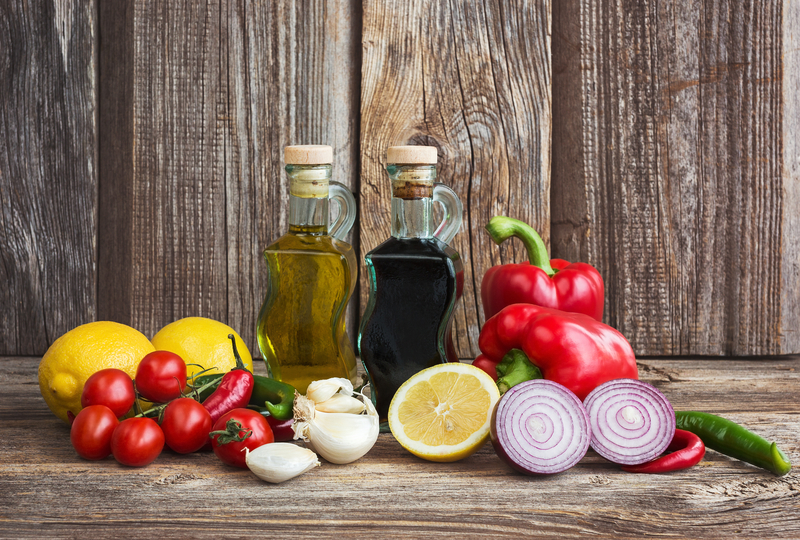7 Ways To Enjoy A Gluten Free Diet
Going gluten free might seem like a punishment, but it does not have to be. There are many ways to replace glutinous foods with gluten free alternatives. For those who have been diagnosed with celiac disease, an autoimmune condition in which the body attacks its own small intestine when gluten has been consumed, going gluten free can be a matter of life and death. There has been much advancement over the past few years accommodating gluten free lifestyles. Here is how you can enjoy a gluten free diet and maybe develop some new healthy habits.
7. Eat More Fruits and Vegetables

Fruits and vegetables are naturally gluten free, so they can be enjoyed as part of any eating regimen. They also provide a wide variety of health benefits. Eating fruits and vegetables in place of glutinous foods can help support the digestive process, skin health and anti-aging, boost the immune system, and ward off chronic inflammation and diseases.
Unlike many foods that contain gluten, such as breads and pastas, fruits and vegetables contain antioxidants and plant chemicals have protective and healing benefits. Many foods which contain gluten are often considered to be empty calories, meaning they provide little nutritional value in exchange for their caloric content. Fruits and vegetables are low in calories and high in healthy nutrients.
6. Substitute Gluten-Free Baking Mixes

Gluten free substitutes are available and ready to be enjoyed. They may come in pre-made mixes that can be used for muffins, cookies, pastas and breads. Or they can be made from scratch using gluten free flours such as coconut, almond, soy, corn, potato and rice. Enjoy learning new ways to cook by experimenting with different gluten free flours.
Consider taking a gluten free cooking class to learn how to enjoy this new lifestyle. Many gluten free options are sold at bakeries and can be enjoyed the same way gluten containing products are. Using gluten free substitutes does not mean they are not as tasty as the real thing. The taste may be even more enjoyable to some, especially without the harsh side effects.
5. Check Your Alcohol

Giving up alcohol is not necessary on a gluten free diet. Just be sure to check labels for traces of gluten. Many alcoholic beverages contain gluten, including beer, lagers, stouts and ales. Opt for a gluten free option that may include cider beer, wine, spirits, ports, sherry and liqueurs. Many gluten free beers are available at restaurants or supermarkets. Try having some fun and switching up a favorite drink with a new, gluten free drink, like wine or cider beer.
4. Eat More Grains

Grains such as brown rice and quinoa are naturally gluten free. They are also high in fiber and protein. Research shows that women who eat whole grains are less likely to gain weight over a 10 year period when compared to women who did not eat whole grains. Add fibrous vegetables and chicken to a brown rice dish and top with olive oil and vinegar for a filling gluten free meal.
Beware of mistaking some wheat based dishes for gluten free grains. Barley, rye and wheat all contain gluten. Other grains that contain gluten are wheat sprouts, kamut sprouts and barley grass. Some oats may also contain gluten. Be sure to check all labels before purchasing grain as most gluten free products will be labeled as such. If at a restaurant, be sure to have the server double check to make sure your grain based dishes are gluten free. Many deep fried dishes are fried in oils that contain gluten, so ask about these as well.
3. Skip the Sauce

Many sauces, gravies, salad dressings, condiments and stocks contain gluten in the form of wheat flour. Gluten is an excellent thickening agent, so it is used in many sauces or dips. If there is no way of knowing which ingredients are used to make a dip or sauce while at a restaurant, be sure to avoid them. Or pick sauces that are guaranteed gluten free, such as oil and vinegar on a salad.
Making homemade sauces is another way to enjoy them without the fear of accidently consuming gluten. Corn flour, arrowroot flour and potato starch can be used as thickening agents to make homemade gluten free gravy. Mustard makes a great substitution for gravy on many meat dishes. Many people do not know that soy contains gluten. Be sure to opt for a gluten free version of any soy based marinades when ordering from a restaurant. Or buy a bottle of gluten free soy sauce from the grocery store.
2. Talk to Others about Being Gluten Free

Talk to others and do research on a gluten free lifestyle for tips and meal suggestions. A doctor will have more information about how to manage a gluten free lifestyle. Talking to friends and family about a gluten free lifestyle may help as they may have ideas or tips for making it work. They may also be able to suggest restaurants which offer many delicious gluten free options.
Friends and family can also help in the kitchen. Invite loved ones to help prepare meals as a celebration of being gluten free. Host a gluten free party and ask all the guests to each bring a different gluten free dish. Then exchange the recipes and repeat the process next week with different recipes. Soon all guests will have a plethora of gluten free recipes to enjoy at home.
1. Focus on Health

Going gluten free should not be viewed as a sacrifice. It should be considered a celebration of health instead. Most people who are gluten intolerant do not even realize it. Instead of thinking about all the things a gluten free diet does not offer, think about the things a gluten free diet has helped with. This may include feeling more energetic and less lethargic, especially after eating a gluten containing meal. It may prevent more serious side effects from occurring, such as digestive damage or irritation.
Going gluten free may also provide the health benefits which improve quality of life. Many people spend years with undiagnosed health problems. If diet is all that is needed to achieve optimal health, be thankful. Count all the ways going gluten free has helped and embrace the solution.